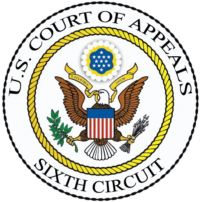The IRS just recently picked up a win in its war on syndicated conservation easement (SCE) deductions. The Sixth Circuit confirmed the full Tax Court decision written by Judge Lauber in Oakbrook Land Holdings. The issue was about what terms are required to make an easement “perpetual”. Before getting into the pretty arcane points Judge Lauber had laid out the big picture:
Oakbrook Land Holdings, LLC (Oakbrook), purchased 143 acres of land near Chattanooga, Tennessee, in December 2007 for $1,700,000. In December 2008, slightly more than one year later, Oakbrook donated a conservation easement over a portion of the tract to the Southeast Regional Land Conservancy (SRLC). On its Federal income tax return for 2008, Oakbrook claimed for this donation a charitable contribution deduction of $9,545,000. Oakbrook thus took the position that the land covered by the easement had appreciated in value by about 700% in a single year during the worst real estate crisis to hit the United States since the Great Depression. (Emphasis added)
The Senate Finance Committee in its 2020 investigation noted that the “engine of every syndicated conservation-easement transaction” is an inflated appraisal. That is why I consider SCE to be an industry based on nonsense. That is enough ranting. Let’s look at the decision.
Perpetuity
A key requirement to deduct a conservation easement is that the easement be perpetual. Well that is a really long time and stuff happens. For example, there might be a taking by eminent domain. That would judicially extinguish the easement. The regulation will still deem the easement to be perpetual if some of the proceeds from such a taking goes toward conservation purposes. How much ? Well you establish a ratio between the value of the easement and the overall value of the property at the time of the donation.
If the unencumbered property was worth $1,000,000 and the easement was worth $900,000, then at least 90% of the proceeds from an eminent domain taking go to the donee to be used for conservation purposes. In order for the contribution to deductible the contracts are supposed to specify that.
But what happens if the owner makes improvements. For example. You own a hill in the middle of nowhere, but you find an expert that says there are dilithium crystals to be mined down there. So that hundred acre hill that you bought for $100 per acre is actually worth a million dollars per acre. You give a local land trust an easement that renounces all mining and other development rights other than the right to build one residence. You take a deduction of $99 million. And then you build a two million dollar house on the top of the hill.
You are worried that maybe the interstate will come through and they will need to level your hill. So your donation documents say that before the split of the proceeds based on FMV at the time of the gift, from which you get bupkis, the value of improvements comes off the top. Or maybe you make the amount that goes to the land trust a fixed amount rather than a ratio.
According to the IRS no deduction for you, because you failed to meet the perpetuity requirement in the regulation.
Two Tax Court Decisions
The Tax Court actually divided its consideration of Oakbrook’s easement into two opinions. First off Judge Holmes considered whether Oakbrook’s easement had failed the perpetuity requirement of the regulation. It is a rather long discussion, because it requires both interpreting the regulation and the deed, The conclusion is clear:
Oakbrook’s Deed violates the regulation because the Conservancy must be entitled to any proceeds from extinguishment or condemnation that are at least equal to the total proceeds (unadjusted by the value of any of Oakbrook’s improvements), multiplied by a fraction defined by the ratio of the FMV of the easement to the FMV of the unencumbered property determined as of the date of the Deed.
The full Tax Court took up the question of whether the regulation was valid. A key question was whether comments that the New York Land Conservancy had made when the regulations was issued had been adequately considered. The IRS finalized the regulation in 1986, Although the majority joined in Judge Lauber’s opinion, Judge Holmes dissented.
This makes the defining characteristic of section 1.170A-14(g)(6)(ii), Income Tax Regs., its utter lack of any contemporaneous explanation of its key choices–to require that donees get a fraction, rather than an absolute amount, of extinguishment proceeds and to require that they get a share of any proceeds from a donor’s improvements to the property.
It is kind of ironic given that he practically simultaneously ruled against Oakbrook.
The Sixth’s Ruling
Judge Karen Nelson Moore, appointed by Bill Clinton, wrote the opinion. Judge Julia Gibbons, appointed by Ronald Reagan, joined in the opinion. Judge Ralph B Guy Jr., another Reagan appointee, concurred in the result, but got there differently.
For the appeal, the IRS had an additional argument. That was that Oakbrook’s gift did not even satisfy the statute, regardless of the regulation’s validity. Judge Moore decided to pass on that.
Next comes the validity of the regulation. According to Oakbrook there were several ways in which the IRS deviated from the Administrative Procedures Act in approving the regulation. The first was that there was not an explanation of the policy rationale behind the way the regulation was structure. To the Judge though things were clear enough:
Taken together, then, the statutory text and the legislative history that Treasury contemplated in promulgating Treas. Reg. § 1.170A-14(g)(6)(ii) illuminate the regulation’s basis and purpose: to provide an administrable mechanism that would ensure that an easement’s conservation purpose as per I.R.C. § 170(h)(5)(A) continued to be protected should the interest be extinguished. That the regulation allots proceeds in a manner more favorable to donees than to donors merely demonstrates Treasury’s acute awareness of Congress’s decision to concern itself with the welfare of one entity over the other once the donation was made. Because we can discern this from the information that Treasury provided during the rulemaking, its concise statement suffices.
Then there was failure to respond to comments, an argument about the Chevron standard and a claim that review was arbitrary and capricious. The arguments got interrelated, but ended up going nowhere.
Contrary to what the petitioners maintain, the Commissioner’s rationale for the proceeds regulation — namely, that it was promulgated to create an administrable rule which ensured that a donee would receive sufficient funds upon extinguishment to continue the conservation purpose — aligns with the obvious concern evinced by Treasury during the rulemaking process that I.R.C. § 170(h)(5)(A)’s perpetuity requirement be satisfied in the event of judicial extinguishment. This rationale both tethered the regulation to its statutory source and left us a clear thread to trace how Treasury navigated between these two points.
Concurrence
Judge Ralph Guy in his concurrence indicated that he believed that the regulation was invalid.
We may be able to discern that Treasury was interpreting Congress’s perpetuity requirement, but the thread stops there. As in Dominion, the proceeds regulation is invalid because Treasury provided “no explanation for the way that use of implements the [protected-in-perpetuity] rule.” Treasury compounded its error by failing to address NYLC’s significant comment that post-donation improvements should “properly alter the ratio,” rather than be divvied up according to a ratio fixed at the time of the grant.
By using a fixed amount rather than a proportion, though, he sees Oakbrook as having violated the perpetuity requirement of the statute. Just as you would expect a property to change in value over time, you expect that the right to alter it changes over time. Converting the development right to a fixed dollar amount means that you are not giving it away in perpetuity. Well that is the gist of it as well as I can tell.
Where Does That Leave Us?
In January the Eleventh Circuit in Hewitt ruled that the perpetuity regulation violated the Administrative Procedure Act. The easement in question was not syndicated, although the owner did later get involved in the industry. A very large proportion of the action in SCE has been in Georgia, so this win for the IRS may not be that significant.
Bill Ellis has a deep understanding of how the industry works. He was not that excited by the decision and did not see it as a good thing, since it delays looking at fair market value. It is worth noting the emphasis that Judge Lauber placed on valuation in his introduction to the Tax Court opinion. Judge Holmes in his dissent indicated that the fight should be about valuation.
Lew Taishoff was rather surprised at the result
As I said in my blogpost, I’ll be double dipped. I was prepared to bet money that 6 Cir would reverse. Judge Guy’s concurrence shredded the majority on the APA issue. Goes to show, you never can tell.
Other Coverage
Jack Straw Fortnightly gave the opinion more than a page noting that now we have a “split of authority, what fun”,
Jack says this disagreement among the panel would not support a motion for rehearing, but it might eventually figure in a petition for certiorari to the Supreme Court.
In the meantime, the Tax Court has literally hundreds of these cases held in abeyance, pending the results in Hewitt and now Oakbrook. Many that would be appealable to the 11th Circuit may have to go to trial on valuation.
Miller & Chevalier gives a good summary and closes with a prediction.
As noted, the Sixth Circuit’s holding conflicts with the Eleventh Circuit’s holding in Hewitt that Treasury violated the APA notice-and-comment requirements by failing to respond to a significant comment in issuing the proceeds regulation. The conflict between Oakbrook and Hewitt, which is based on the question of how to determine if a comment is “significant” for purposes of the APA, represents a circuit split. We expect that the parties in both cases may petition the Supreme Court for review and look forward to seeing if the Supreme Court takes up this important issue.
———————————————————————————————————————————————————————–
Originally published on Forbes.com.
For great value continuing professional education. I recommend the Boston Tax Institute

You can register on-line or reach them by phone (561) 268 – 2269 or email vc@bostontaxinstitute.com. Mention Your Tax Matters Partner if you contact them.































































































